![]() 1st Battalion 22nd Infantry
1st Battalion 22nd Infantry ![]()
Bill Saling
1965-1967
Diary Supplement – Combat Air Assault
Support Platoon was responsible
for all combat resupply - food, ammunition and replacement
personnel. My platoon
under the direction of SSGT Miller performed admirably during our
time in Vietnam. They weren’t much for rules
and military discipline but they did a great job of making sure
no unit in our battalion was ever unable to perform their mission
because they lacked adequate supplies. This was done at great
risk of either being blown up by mines in the road or being shot
down
on a resupply flight.
However during a battalion
combat air assault, Support Platoon was responsible for
establishing the landing zone and
coordinating all follow on helicopter operations into and out of
the landing zone. This responsibility meant that my platoon
was first on the ground along with one of the line companies to
provide security until more troops arrived.
To help the helicopter pilots
identify ground control personnel they had me wear a white
engineer tape around my helmet.
I never really thought about what a dumb idea that was at the
time and fortunately I was never the target of a sniper.
The period from January 1967
till April I spent all my time at the forward firebase next to
the Cambodian border where
we were repeatedly mortared by the NVA. In March 1967 we were
surrounded and told to expect a massive human wave attack,
which thankfully never happened. This strategy of search and
destroy missions was designed to block the NVA from infiltrating
material and troops along the Ho Chi Minh Trail into South
Vietnam.
These pictures will give you some sense of the chronology of a combat air assault.
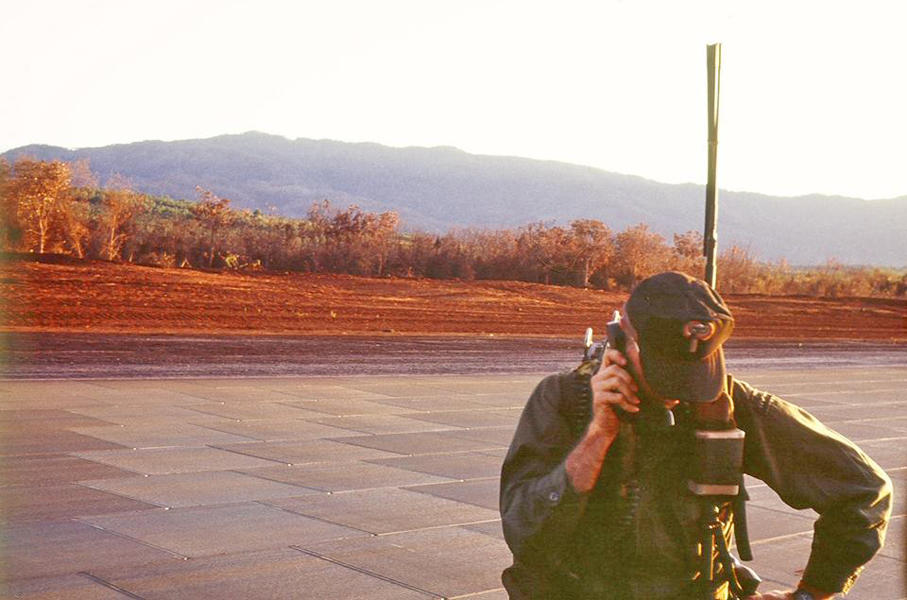
An Army Pathfinder would coordinate the helicopters arriving at the correct pick up location.
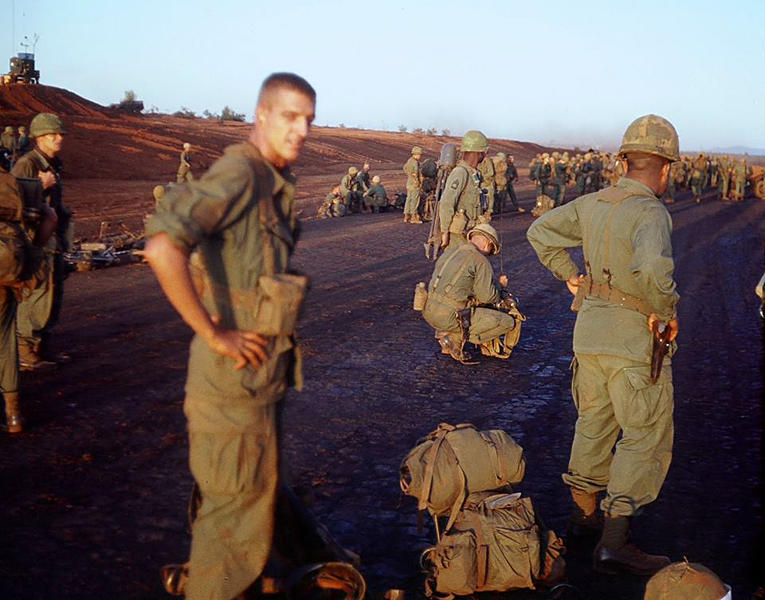
Battalion staging for boarding the helicopters for the air assault.
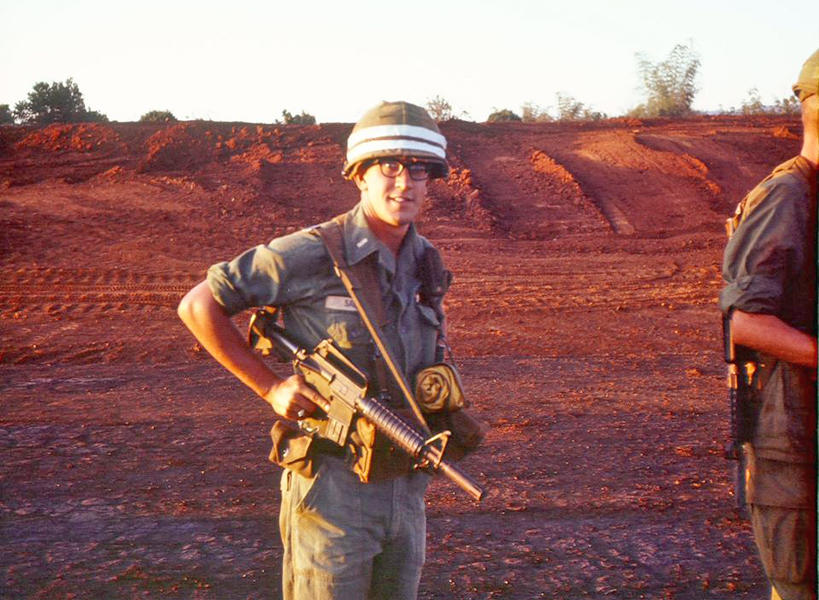
Note the white engineer
tape around the helmet. I was just damn lucky there wasn't any
snipers near the LZ. Roll on my front belt
was landing panels to mark the LZ for the pilots to land.
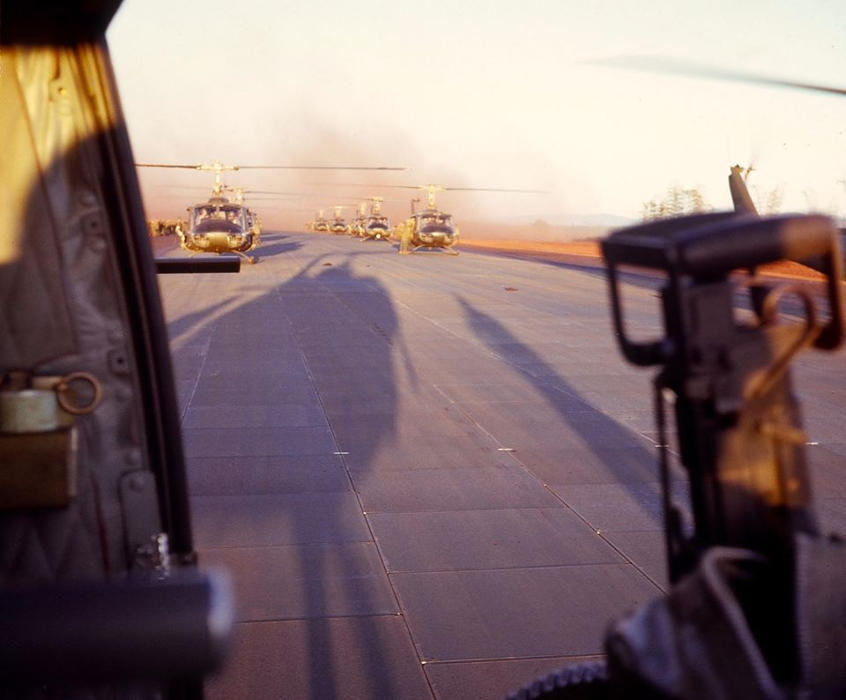
There is nothing more
exhilarating than boarding your chopper with your team waiting to
go into combat. The noise is deafening.
The smell of and sounds are something you never forget.
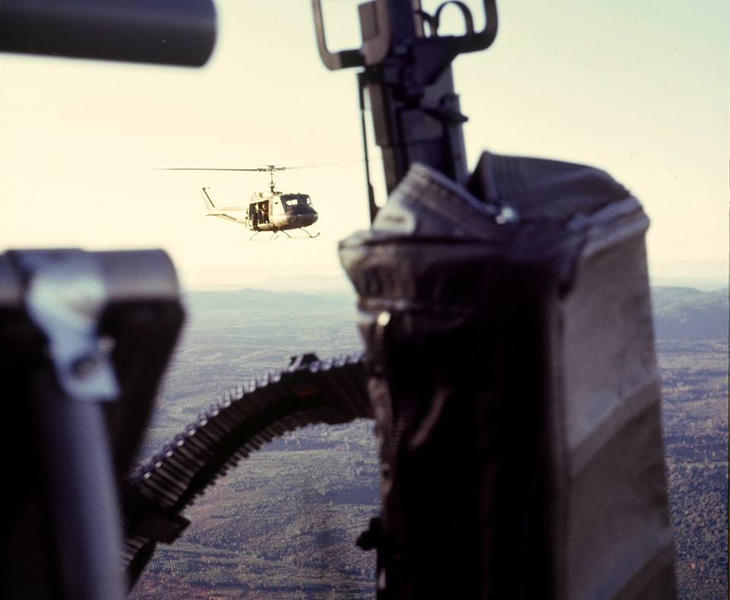
You are on the way.
Hoping the pilot doesn't turn around in his seat and tell you it
is a "hot LZ". A hot LZ means the LZ is likely to be
under enemy fire when we land. That is not really true, if you
have a hot LZ the helicopters don't land, they hove about 10 feet
above the ground
or what they think is 10 feet and you jump loaded with a 60lb.
rucksack, weapon, ammo, water, etc. If you are jumping into tall
grass you may very well
be jumping 20 feet. Definitely a jarring event.
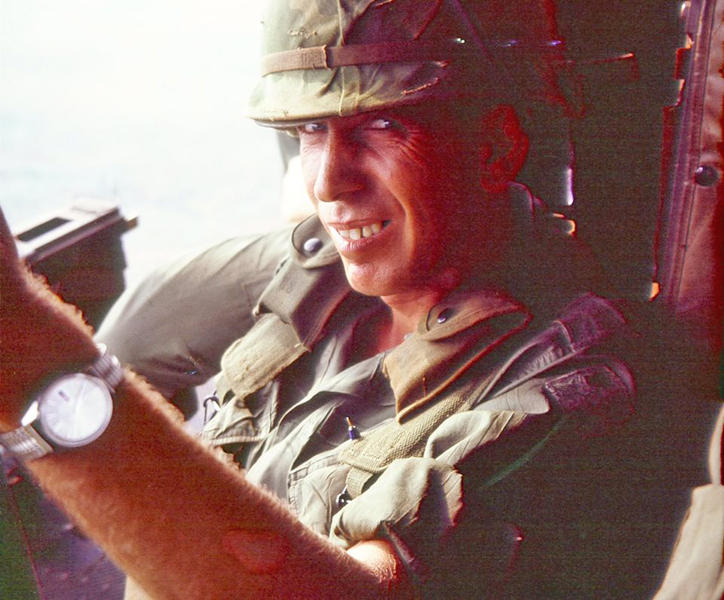
MSGT Gable, First Sergeant A Company.
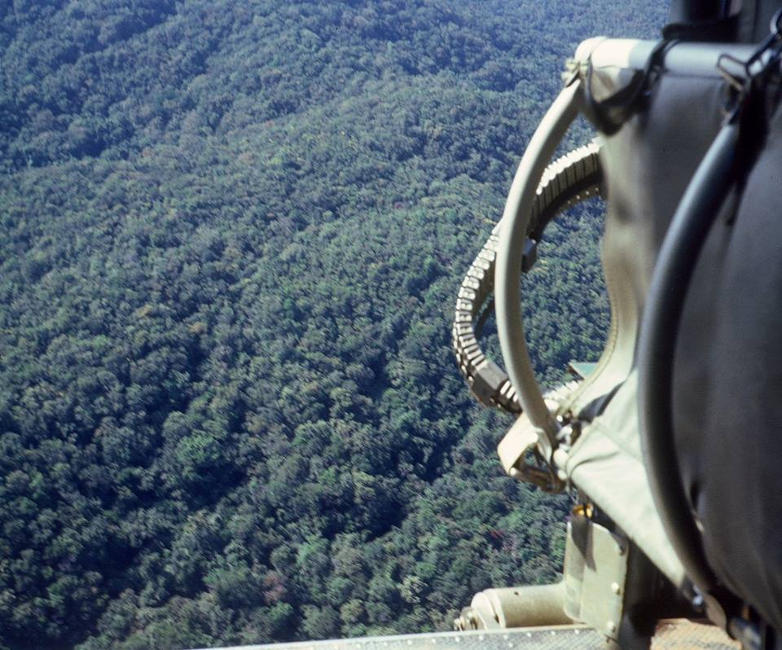
Triple canopy jungle, trees 200 feet tall, many either teak or mahogany.
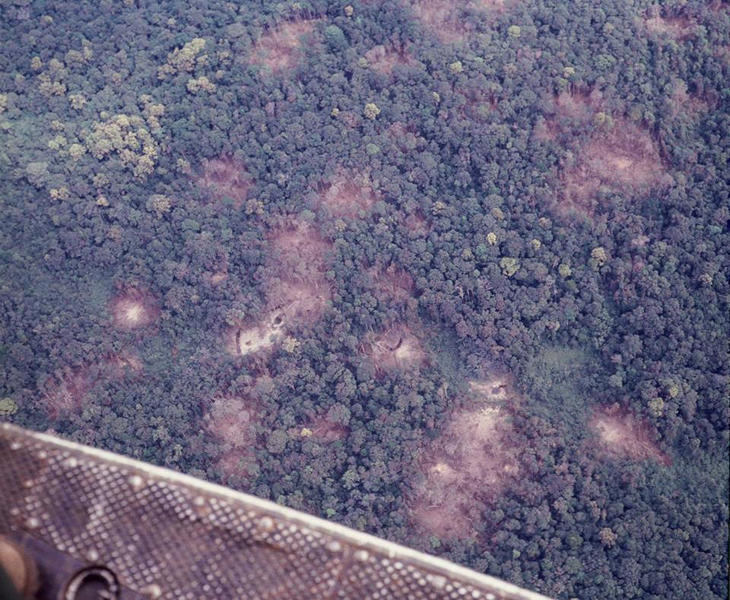
Bomb craters from a B-52 Arc Light strike. Each of those craters was big enough to land a helicopter.
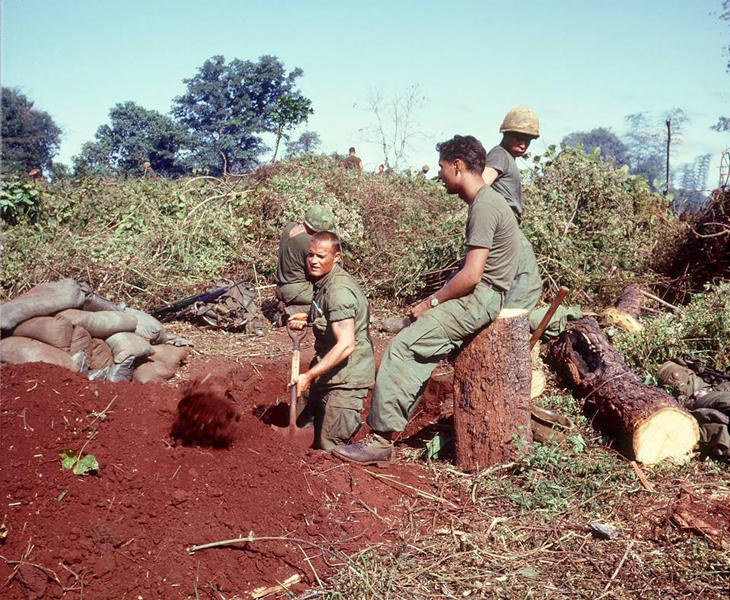
Thomas Locke digging with Salazar keeping watch for NVA. Logs were used for overhead protection from NVA mortars.
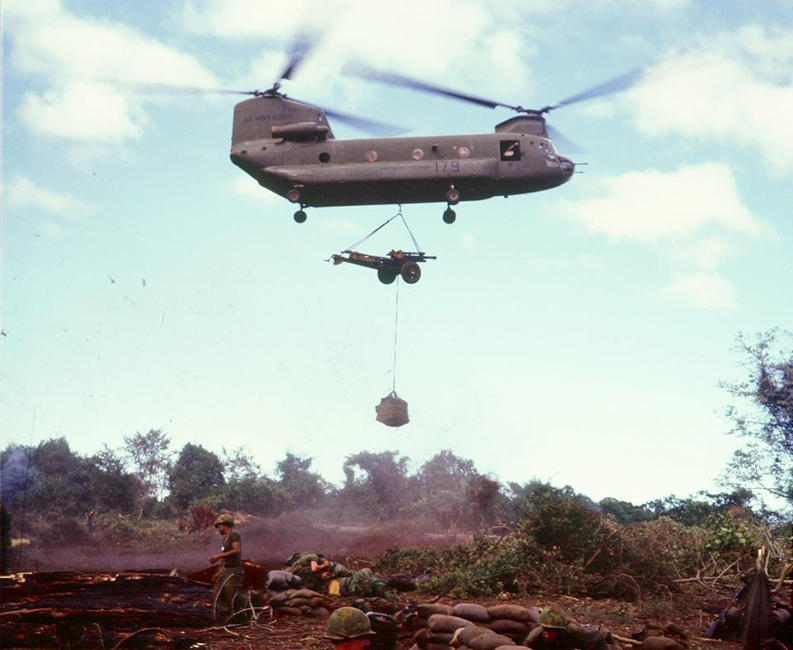
As soon as the LZ was
secured the Chinooks started bringing in our artillery. Each
firebase had a battery of five 105 Howitzers
arranged in a star pattern so they could fire in 360 degrees.
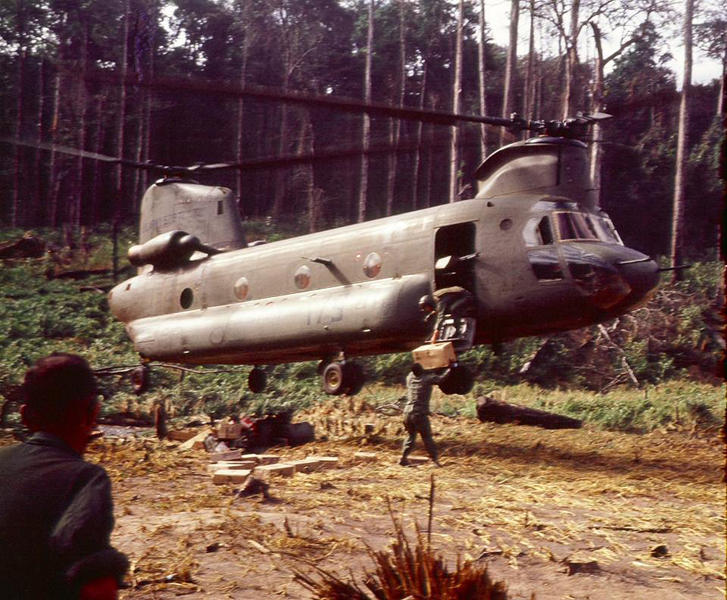
Until the LZ was
declared secure the pilots would not land. You can see the tree
stump in the foreground
that was blown with C-4 to clear the LZ.
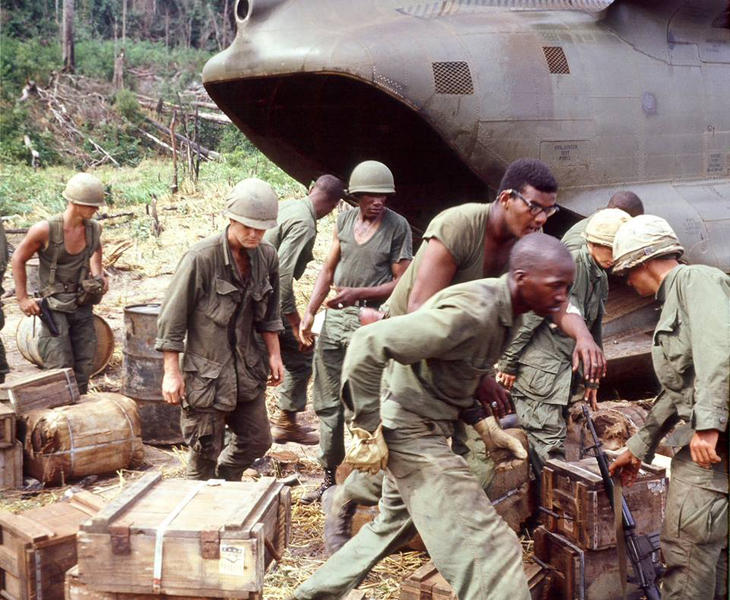
As soon as the LZ was secure the first task was to off load the ammunition.
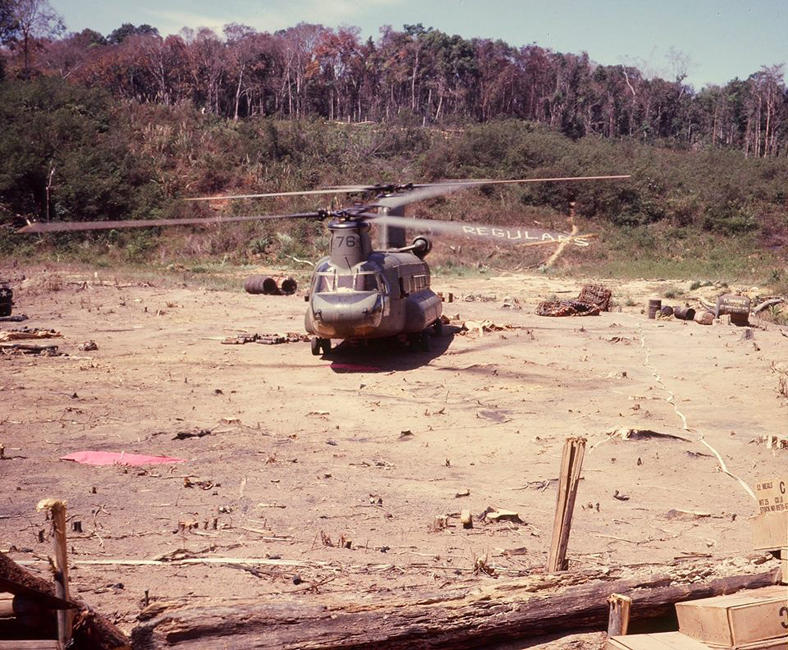
This is my LZ in front
of my bunker. Note the pink panel on the ground. LTC Morley was
big on advertising.
Our battalion slogan was Regulars, so he had us use white
sandbags to advertise our arrival.
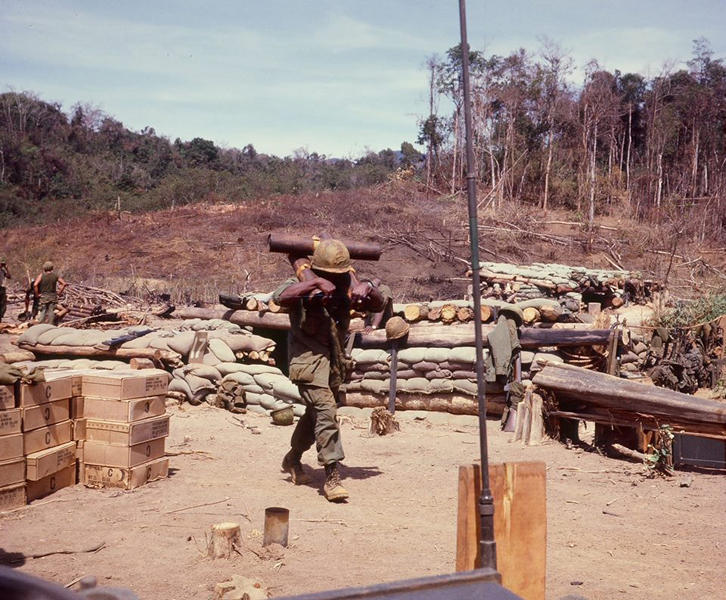
No vehicles so all the
ammo had to be carried to the gun location. This guy is carrying
rounds for an 81mm mortar.
Notice the double log overhead for each bunker.
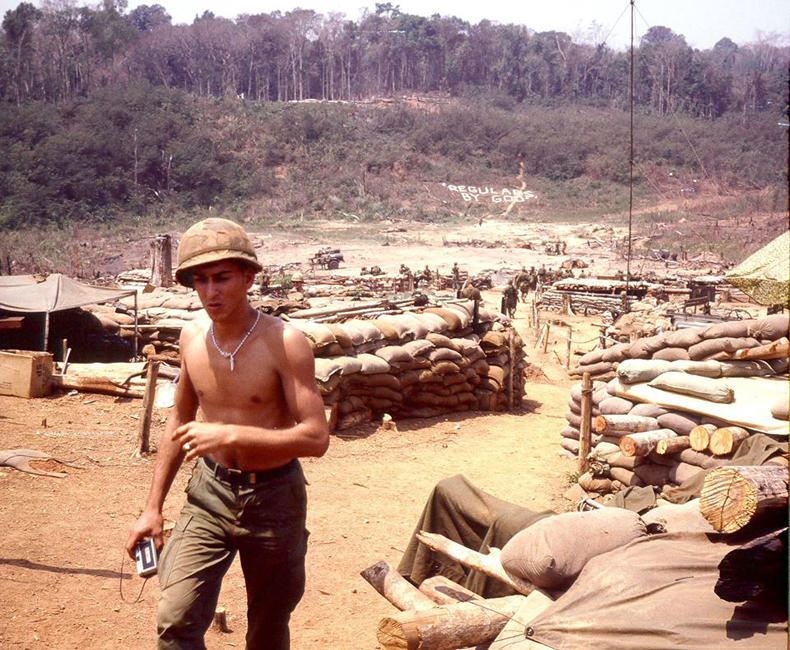
You will notice the white sandbags now read Regulars by God in response the the NVA trying to dislodge us from this firebase.
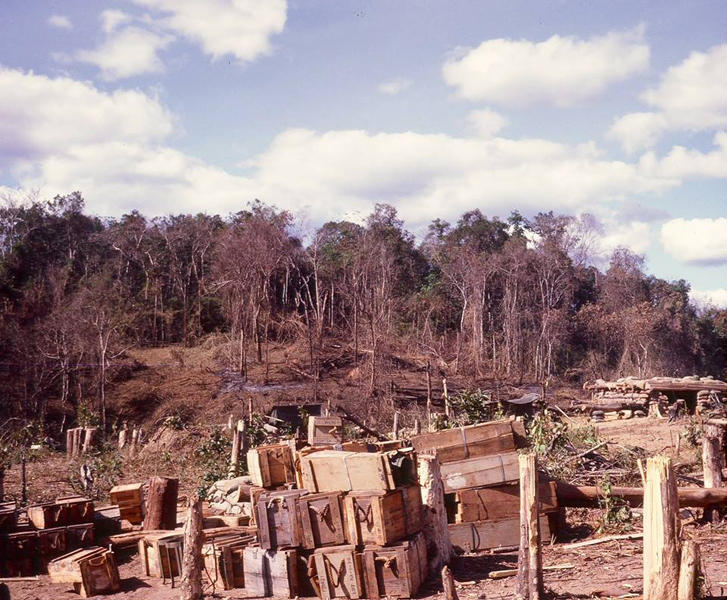
The jungle was very
close so I believe we had sprayed Agent Orange on the tree line
adjacent to the firebase to provide a better field of fire.
It denied the NVA from getting to close to the firebase without
being seen.
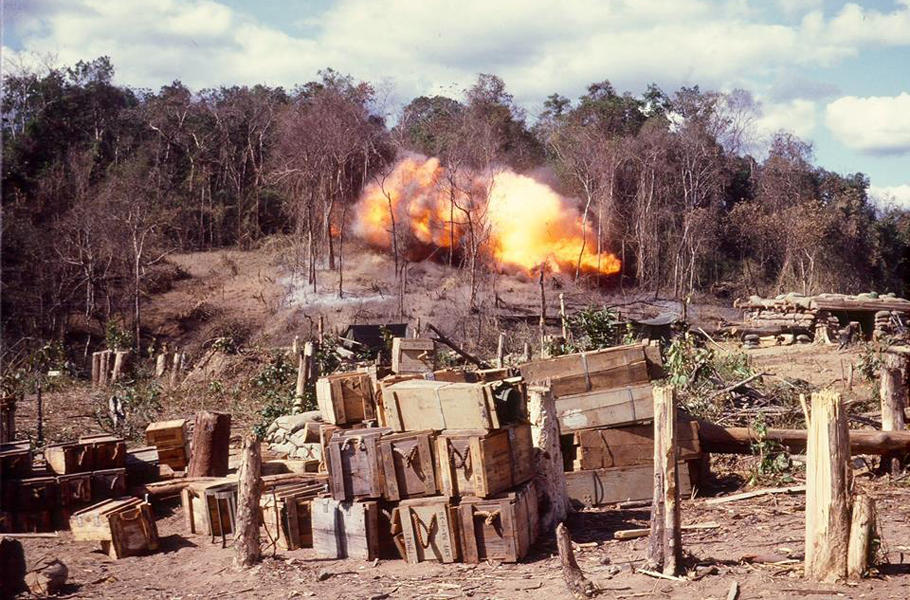
To improve our field of fire the engineers rigged bangalore torpedo to clear the tree line.
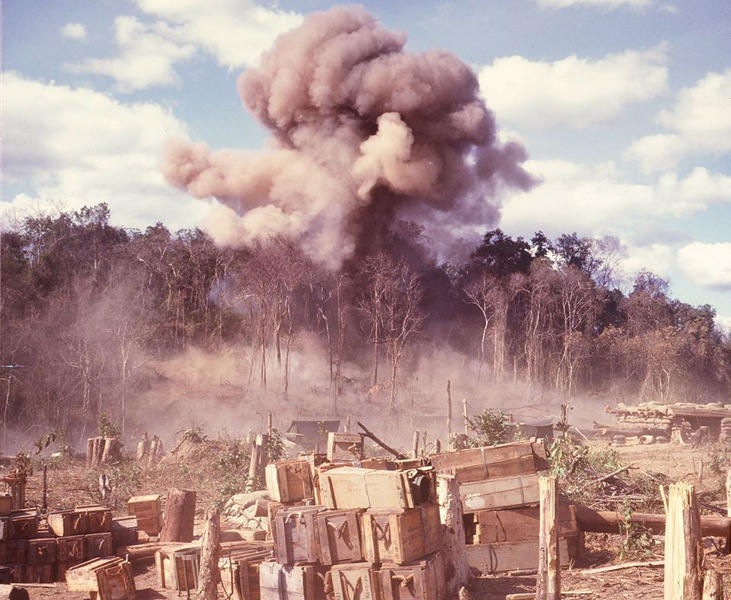
Smoke from the bangalore.
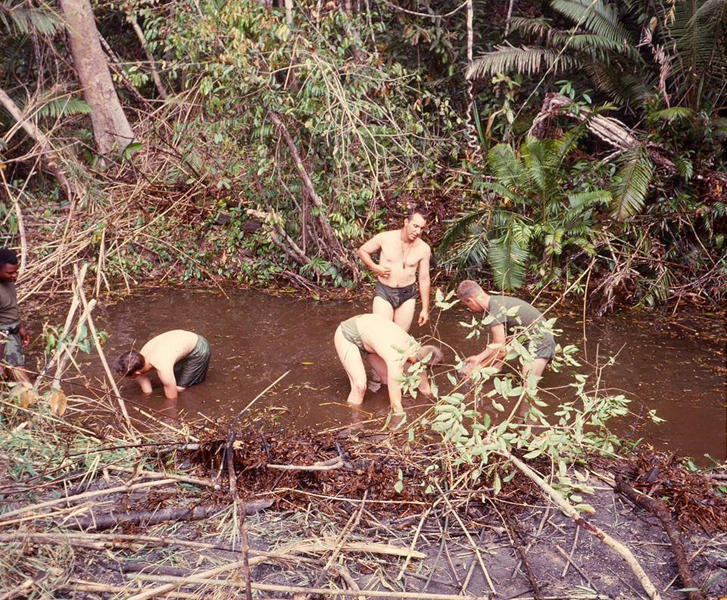
Saturday night bath. We
have really gone downhill from our time at Tuy Hoa and our shower
point. This was life in the Infantry.
Leeches were a bitch. I still have scars where some idiot tried
to remove the leech with a red hot bayonet blade.
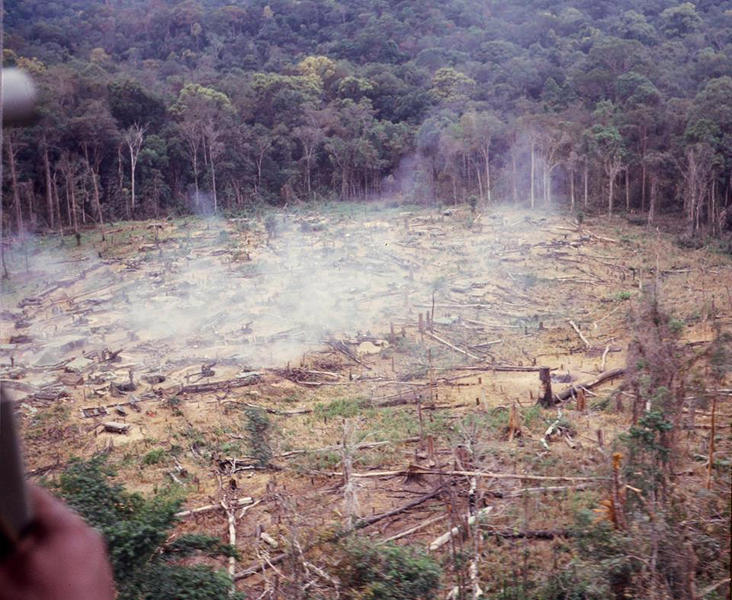
Good aerial shot of what
a firebase looked like. The top of the picture was the Cambodian
border.
The smoke is from the artillery firing a barrage.
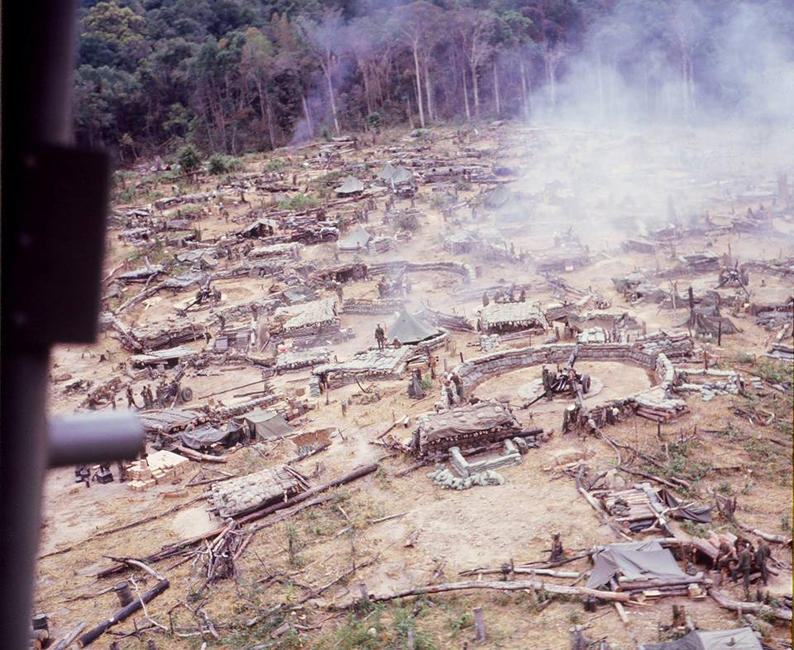
Can you find all five howitzers? We lived in our bunkers but the battalion officers had tents.
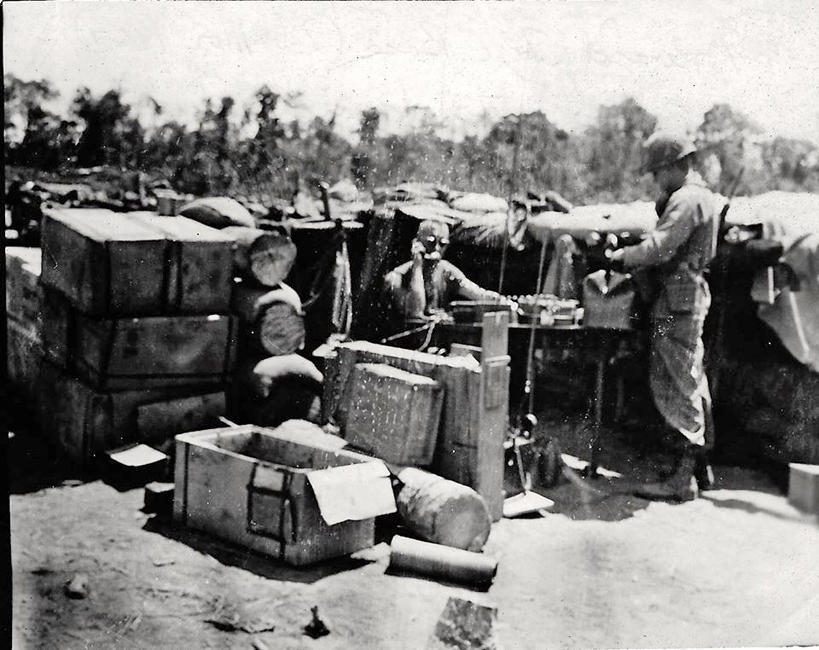
This was my home for almost six months. Lt. Duncan is standing in front of me with the pay satchel.
Home | Photos | Battles & History | Current |
Rosters & Reports | Medal of Honor | Killed
in Action |
Personnel Locator | Commanders | Station
List | Campaigns |
Honors | Insignia & Memorabilia | 4-42
Artillery | Taps |
What's New | Editorial | Links |